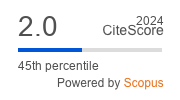Introducing Progressia: A simple, field-validated method for technological innovation
DOI:
https://doi.org/10.23726/cij.2024.1505Keywords:
innovation, technology, method, user-research, TRLAbstract
Innovation, a growth catalyst, often lacks structure. Unlike science, innovation lacks a comparable, structured method. While tools, frameworks, and practices exist, none precisely mirror the scientific method. The article introduces the Progressia method, leveraging the Technical Readiness Level (TRL) ladder, initially developed by NASA, along with a Need/Market Assessment Ladder, forming an "innovation matrix." Tested in a plant-based protein project by Cereal Docks Group, the method aligns technology advancements with market needs, ensuring a smooth transition to industrialization and market readiness. Showcasing effectiveness in reducing uncertainty, the Progressia method propels successful technical innovation projects also in a corporate environment.
References
Ariew, R., (1986). Descartes as critic of Galileo’s scientific methodology. Synthese, 67(1), 77–90. https://doi.org/10.1007/BF00485511
Bentley, D. (2022). Using Readiness Levels To Improve The Success Rate Of Large-Scale Change Initiatives, Forbes, https://www.forbes.com/sites/forbesbusinesscouncil/2022/ 06/13/using-readiness-levels-to-improve-the-success-rate- of-large-scale-change-initiatives/?sh=20b586047cfd
Bird, A. et al., (2022), Thomas Kuhn, The Stanford Encyclopedia of Philosophy. Metaphysics Research Lab, https://plato.stanford.edu/archives/spr2022/entrieshomas- kuhn/
Brikman Y., (2016), A Minimum Viable Product Is Not a Product, It’s a Process, Y Combinator, https://www.ycombinator.com/blog/minimum-viable- product-process
Calder, N., et al (2024). Overcoming Common Challenges to Disruptive Innovation. Harvard Business Review. https://hbr.org/2024/03/overcoming-common-challenges- to-disruptive-innovation
Christensen, C. M. et al, (2015). What Is Disruptive Innovation? Harvard Business Review. https://hbr.org/2015/12/what-is-disruptive-innovation
Cocchi, N. et al, (2024). Stage-Gate Hybridization Beyond Agile: Conceptual Review, Synthesis, and Research Agenda. IEEE Transactions on Engineering Management, 71, 6435–6453, https://doi.org/10.1109/TEM.2023.3282269
Cohen, W., (2013). Drucker on Marketing: Lessons from the World’s Most Influential Business Thinker. McGraw Hill Professional, ISBN 0071778624, 9780071778626
Cooper, R.G. (1990). Stage-gate systems: A new tool for managing new products, Business Horizon, 33(3), 44-54, https://doi.org/10.1016/0007-6813(90)90040-I
Dickens, L., & Watkins, K. (1999). Action Research: Rethinking Lewin. Management Learning, 30(2), 127– 140. https://doi.org/10.1177/1350507699302002
Ekmekci, I., & Nebati, E. E. (2019). Triz Methodology and Applications. Procedia Computer Science, 158, 303–315. https://doi.org/10.1016/j.procs.2019.09.056
Fecher, F. et al, (2020). Innovation labs from a participants’ perspective, Journal of Business Research, 110, 567-576, https://doi.org/10.1016/j.jbusres.2018.05.039.
Gross, M., (2016), Give Me an Experiment and I Will Raise a Laboratory, Science, Technology & Human Values, 41(4), 6-20. https://journals.sagepub.com/doi/10.1177/0162243915617 005
Guertler, M. R. et al, (2020), Encouraging and enabling action research in innovation management. R&D Management, 50(3), 380–395. https://doi.org/10.1111/radm.12413
Guizien, D. (2017). Le feuilleton de l’été « Les mots valises »: L’innovation (chapitre 3, épisode 1). Eco-Bretons. https://www.eco-bretons.info/feuilleton-de-lete-mots- valises-linnovation-chapitre-3-episode-1/
Ilevbare, I. M. et al, (2013). A review of TRIZ, and its benefits and challenges in practice. Technovation, 33(2), 30–37. https://doi.org/10.1016/j.technovation.2012.11.003
Interaction Design Foundation, (2016). What is Design Thinking?, The Interaction Design Foundation, https://www.interaction- design.org/literature/topics/design-thinking
Interaction Design Foundation, (2016). What is User Research?, The Interaction Design Foundation, https://www.interaction-design.org/literature/topics/user- research
Kim, C. & Mauborgne, R. (2023), What is Blue Ocean Strategy: About Blue Ocean Strategy, https://www.blueoceanstrategy.com/what-is-blue-ocean- strategy/
Lewin K., (1946), Action Research and Minority Problems, Journal of Social Issues, 2, 34-46, https://doi.org/10.1111/j.1540-4560.1946.tb02295.x
Mankins, J. C. (2009). Technology readiness assessments: A retrospective. Acta Astronautica, 65(9), 1216–1223. https://doi.org/10.1016/j.actaastro.2009.03.058
NASA (2023), Technology Readiness Levels, NASA, https://www.nasa.gov/directorates/somd/space- communications-navigation-program/technology- readiness-levels/
Olechowski, A. et al, (2020). Technology readiness levels: Shortcomings and improvement opportunities, Systems Engineering, 23. https://doi.org/10.1002/sys.21533
Onetti, A. (2014). Scaleups. When does a Startup turn into a Scaleup, Startup Europe Partnership, https://startupeuropepartnership.eu/scaleups-when-does-a- startup-turn-into-a-scaleup/
Osterwalder, A. (2013). A Better Way to Think About Your Business Model. Harvard Business Review, https://hbr.org/2013/05/a-better-way-to-think-about-yo
Popper, K. R. (2002). The Logic of Scientific Discovery. Psychology Press. ISBN 0415278449, 9780415278447
Priya, A. (2021). Case Study Methodology of Qualitative Research: Key Attributes and Navigating the Conundrums in Its Application. Sociological Bulletin, 70(1), 94–110. https://doi.org/10.1177/0038022920970318
Rigby, D. et al, (2016), Embracing Agile, Agile Project Management, Harward Business Review https://hbr.org/2016/05/embracing-agile
Savoia A., (2019) The Right It: Why So Many Ideas Fail and How to Make Sure Yours Succeed, HarperOne, ISBN 0062884654, 978-0062884657
Scrum Guides. (2020). The 2020 Scrum GuideTM, https://scrumguides.org/scrum-guide.html
Srivastava, S. (2018). Verifiability is a core principle of science. Behav Brain Sci. 2018 Jan;41: e150. 10.1017/S0140525X18000869
Statista, (2024). Value of venture capital investment U.S. 2006-2022, Statista, https://www.statista.com/statistics/277501/venture- capital-amount-invested-in-the-united-states-since-1995/
Sweezy, P. M. (1943). Professor Schumpeter’s Theory of Innovation. The Review of Economics and Statistics, 25(1), 93–96. https://doi.org/10.2307/1924551
The Lean Startup Methodology, (2023). The Lean Startup Methodology, The Lean Startup https://theleanstartup.com/principles
Viki, T. ET AL, (2019). The Corporate Startup: How Established Companies Can Develop Successful Innovation Ecosystems. Management Impact, ISB: 9462763070, 978-9462763074.
Yfanti, S., & Sakkas, N. (2024). Technology Readiness Levels (TRLs) in the Era of Co-Creation. Applied System Innovation, 7(2), Articolo 2. https://doi.org/10.3390/asi7020032
Downloads
Published
How to Cite
License
Copyright (c) 2024 Francesca Turetta, Enrico Costanzo

This work is licensed under a Creative Commons Attribution 4.0 International License.
Authors who publish with this journal agree to the following terms:
- Authors retain copyright and grant the journal right of first publication with the work simultaneously licensed under a Creative Commons Attribution License that allows others to share the work with an acknowledgement of the work's authorship and initial publication in this journal.
- Authors are able to enter into separate, additional contractual arrangements for the non-exclusive distribution of the journal's published version of the work (e.g., post it to an institutional repository or publish it in a book), with an acknowledgement of its initial publication in this journal.
- Authors are permitted and encouraged to post their work online (e.g., in institutional repositories or on their website) prior to and during the submission process, as it can lead to productive exchanges, as well as earlier and greater citation of published work (See The Effect of Open Access).


